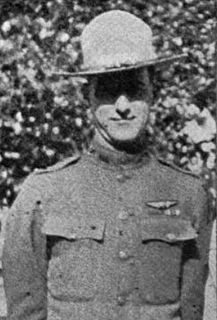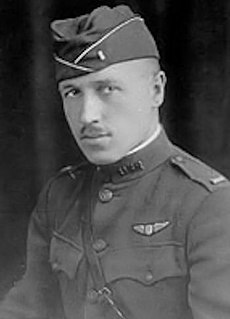 W
WMajor James Warren Bagley was an American aerial photographer, topographic engineer and inventor.
 W
WWillard Joseph "Joe" Chamberlin (1890–1971) was an American entomologist and professor at Oregon State College who specialized in jewel beetles and bark beetles. He was also a pilot in World War I who received the French Cross of War and was recommended for the U.S. Distinguished Service Cross.
 W
WCharles Fahy was the 26th Solicitor General of the United States and later served as a United States Circuit Judge of the United States Court of Appeals for the District of Columbia Circuit.
 W
WCedric Errol Fauntleroy (1891–1973) was an American pilot who in 1919 volunteered to serve in the Polish Air Force during the Polish-Soviet War of 1919–1921.
 W
WFarnum Thayer Fish was an early American airplane pilot known as the "Boy Aviator". He was, at the age of 15, the "youngest licensed aviator in the world".
 W
WEdmund Joseph Flaherty was an American film actor who appeared in about 200 films.
 W
WWeston Birch "Bert" Hall was a military aviator and writer. Hall was one of America's first combat aviators, flying with the famed Lafayette Escadrille in France before the U.S. entered World War I.
 W
WCommander Willis Bradley Haviland, was a pioneer military pilot in World War I and a Naval Air Station Commanding Officer in World War II. As the sixteenth American volunteer in the Lafayette Escadrille, he was among the first air combat pilots to fight the Germans in World War I, before the United States officially entered the war. He would later become the first pilot to launch a plane from a battleship.
 W
WEdward Lincoln Hoffman (1884–1970) was a United States Army Air Service (USAAS) pilot, officer and Engineering Division Chief at McCook Field. With no parachute experience, he formed a team that included aviation pioneers Leslie Irvin and James Floyd Smith which developed the first modern parachute. The 1926 Collier Trophy was awarded to Major E. L. Hoffman, Air Corps for "development of a practical parachute;" the year's greatest achievement in American aviation.
 W
WBruce Campbell Hopper was a World War 1 aviator, newspaper reporter, author, historian, and lecturer who served as an associate professor of government at Harvard University from 1930 to 1961. He was an early expert on the Soviet Union, authoring influential articles, informing US State department policy, and lecturing extensively for over thirty years. Among his many students were Joseph P. Kennedy Jr., John F. Kennedy, and Ted Kennedy. Dr. Hopper advised John F. Kennedy on the completion of his thesis at Harvard, eventually published as "Why England Slept".
 W
WLieutenant William Dolley Tipton began his military career as a World War I Sopwith Camel pilot. The U.S. Air Force officially credits him with four aerial victories during the war, although other sources claim he had five, and thus was a flying ace. He was one of the founding officers of what would become the Maryland Air National Guard. As a member of the Maryland National Guard, he was mobilized during World War II. He rose to the rank of colonel during the war. He died on December 12, 1945 in an aircraft accident. Tipton Airport in Anne Arundel County, Maryland, is named in his honor.
 W
WLt. James Albert Whitted, was an American aviator and St. Petersburg, Florida's best-known pilot. During Whitted's career he ran a commercial air service business, was an instructor at the Naval flight school, and was also an engineer. Whitted was killed in a plane crash near Pensacola, Florida in 1923. St. Petersburg's city airport was subsequently named Albert Whitted Airport in 1928.
 W
WWilfred Anthony (Tony) Yackey, Jr., known professionally as W.A. Yackey, was an airplane pioneer of the 1920s. A veteran pilot of World War I, he flew for both the United States and Italian Air Force, and was decorated with the Croix de Guerre by the French government for acts of heroism against the enemy. Returning to the United States, he settled outside of Chicago and operated the Checkerboard Aviation Field in Maywood, Illinois. From this area he would start a flying school, advertised as one of the oldest flying schools in the United States at the time. He would also start the Yackey Aircraft Company, first modifying surplus World War I planes for civilian private and commercial use, and later manufacturing planes of his own design. On October 4, 1927, Tony Yackey died while he was testing one of his planes over the air field when a wing collapsed, causing the plane to crash into the grounds.